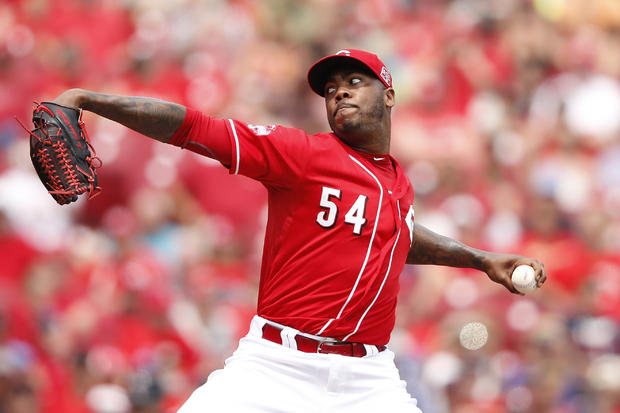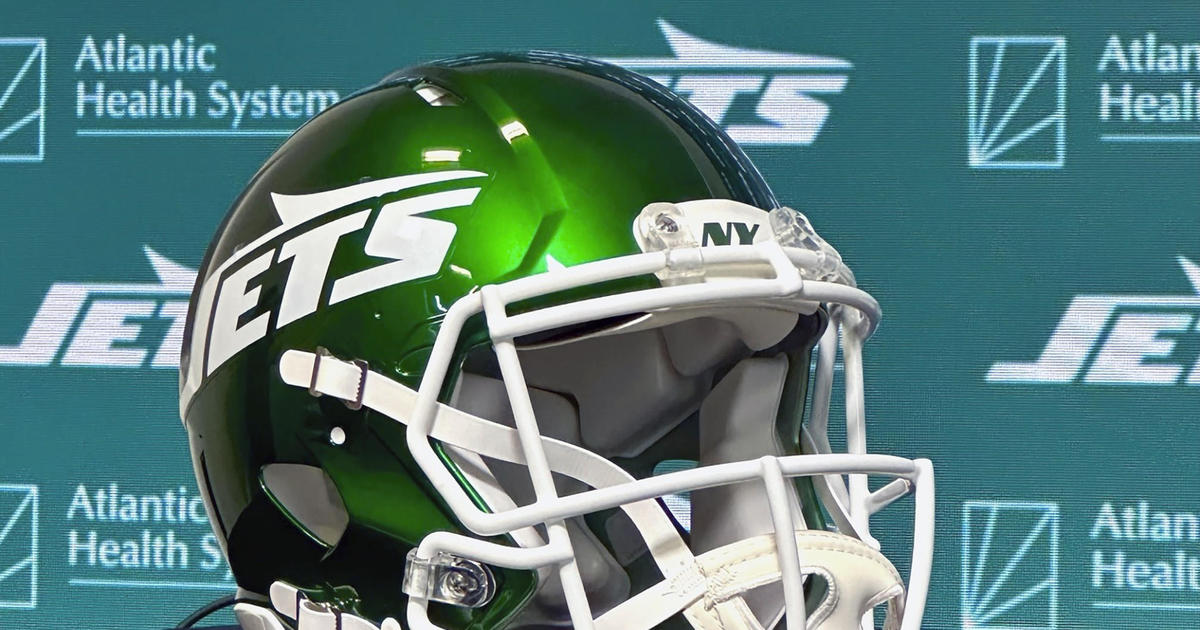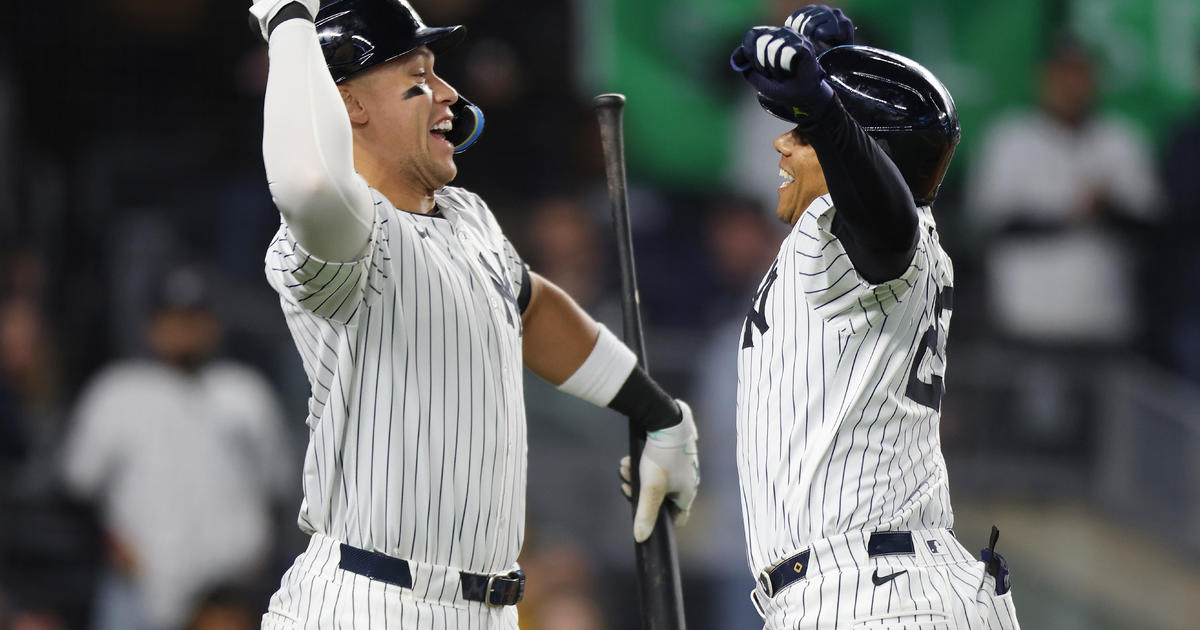Sweeny: Baseball Insiders Love The Moves Yankees Have Made
By Sweeny Murti
» More Columns
The Grammy for Best New Artist gets unduly slammed in my opinion. Sure, if you peruse the list of winners you'll come up with Debby Boone, Starland Vocal Band, Culture Club and -- YIKES -- Milli Vanilli.
But did you know that The Beatles, Crosby, Stills & Nash, Sheryl Crow, John Legend, and Adele have also won Best New Artist?
This is an award that truly offers the winner a chance for significant impact. So as we eagerly await who wins that little victrola trophy next week, I thought it would be a good time to see who we might consider the Best New Artist on the Yankees for 2016. In other words, which move made by the team this winter -- and there were only a few to choose from -- will have the most significant impact on the upcoming season?
That's how I phrased the question to a dozen or so insiders around the game, and responses I got were a bit surprising.
Most people chose Aaron Hicks (acquired in a trade with Minnesota for catcher John Ryan Murphy) than anyone else, citing his elite defense, ability to impact the team speed on the bases and the effect of keeping all the outfielders fresh by having a fourth outfielder that plays several times a week. Joe Girardi has in fact talked about getting a good deal of playing time for Hicks.
Providing some relief for Brett Gardner, Jacoby Ellsbury, and Carlos Beltran I think is so important. And believe it or not, last year it was less a concern for Beltran than for the others. Beltran actually got stronger as last season went along and was healthy enough to play every day in September. As a result, he provided big hits that drove the Yankees' playoff push. Gardner and Ellsbury were the ones who dragged in August and September, apparently their style of play compromised by nagging injuries. Hicks has the ability to help in that regard, his switch-hitting ability lending to a more reliable option than the platoon-only option Chris Young was.
Opinions on Hicks seem to focus on his potential, mostly unrealized, which is why the Yankees were able to get him for a backup catcher. His potential, however, is what makes talent evaluators drool. One scout told me, "He should be better. He's one heck of an athlete and he has a chance to be awesome." Another scout raved that Hicks "becomes a star in that ballpark," meaning Yankee Stadium, of course. And at the time of the trade a longtime major league coach told me Hicks could be on par defensively with Baltimore's Adam Jones.
Is Hicks really ready to break out in 2016? If so, he is absolutely the most impactful player the Yankees have acquired this winter.
There were also a few positive votes for Starlin Castro (acquired in a trade with the Cubs for Adam Warren). "That's a big upgrade," one GM said, and others I spoke with cited his offensive potential at a position -- second base -- the Yankees have struggled with since losing Robinson Cano two years ago.
Although Castro isn't a slam dunk, as there is enough concern over his poor first half last season. "There's a reason the Cubs got him out of there," one executive told me, while lamenting the loss of Warren, a key swingman in 2015.
For the ones who like Castro, his glove is a huge factor. Along with Didi Gregorius, the Yankees essentially have two shortstops playing up the middle. With so many infield shifts employed, that ability for those two to play comfortably on either side of the bag is a bonus. And it's been decades since the Yankees had a double play combination this young.
One executive likes both Hicks and Castro, but gave the edge to Hicks because of the "upside factor," while Castro "is more of a finished product."
Aroldis Chapman (acquired via trade with Cincinnati for four minor league prospects) took a while to come up in my little survey, but eventually he did come up, as some executives believe much like the fans do that Chapman will have the biggest impact. The point there is pretty obvious, that the games are shortened with an intimidating trio of relievers, and that their presence, ideally, will be less taxing on the starters. That is clearly the splashiest move the Yankees made this winter.
However, I made the point when the Yankees made the deal that they had astonishing records last year when leading after six innings (66-3), seven innings (73-2), and eight innings (81-0). So where is the room for improvement? The Yankees had much more trouble getting leads in the second half of the season than they did protecting them. General manager Brian Cashman even alluded to this in one recent public appearance, acknowledging his star relievers are likely to lose at least a few leads during the season.
Perhaps there is room to improve the Yankees late-inning mark in tie games. Last year they were 9-13 when tied after seven, 3-11 when tied after eight, and 4-9 in extra innings. The only way this really changes, however, is if Girardi is ready to use his top relievers in tie games. His strategy in the past has been to try and hold the fort with other relievers, mostly because the season-long workload would become burdensome if his top arms were asked to pitch in an extra dozen or more games. I personally don't see this strategy changing, unless another top arm emerges to be a seventh- and eighth-inning option that could rest one of the big three.
One executive told me keeping Andrew Miller was their best move because of the composition of the starting rotation. Same as last year, the Yankees don't have 200-inning guarantees in their rotation, so the bullpen strength is important, and rather than trading away Miller after getting Chapman, the Yankees appear ready to unleash their three-headed monster. The hope there, of course, is that that there are more leads to protect and the Yankees will push their way over 90 wins for the first time since 2012.
There was one answer I received that I thought was the most intriguing, and that was the proverbial best move being the one you didn't make. As the free agent market churned out huge contracts, many teams were in play, but not the Yankees. They didn't sign a single major league free agent, which goes against everything we have been used to following the Yankees.
That the Yankees didn't lock themselves into another long-term contract for a player in his 30s was what one executive told me was the biggest move (or non-move) the Yankees made. With an eye towards a younger, more athletic and flexible roster, the Yankees stayed out of the free agent pool and that "will let them be creative in exploring more options along the way," this executive said.
"I know that won't appeal to a lot of the fan base, but it's something other teams have noticed," he added.
That last part struck me -- that other teams seemingly expected the Yankees to continue outspending their mistakes, in turn creating more mistakes and an endless cycle. This Yankee team appears to be trying to end the cycle, or is at least coming up for air long enough to make another spending spree worthwhile. That could still be more than two years away as the clock ticks towards Bryce Harper's free agency.
The 2016 Yankees aren't finished of course. Even if they don't make a significant addition before opening day, there is always the possibility of a new face or two or six before October comes. For now, there is enough to watch out for -- old and new -- when pitchers and catchers report next week.
Follow Sweeny on Twitter at @YankeesWFAN





